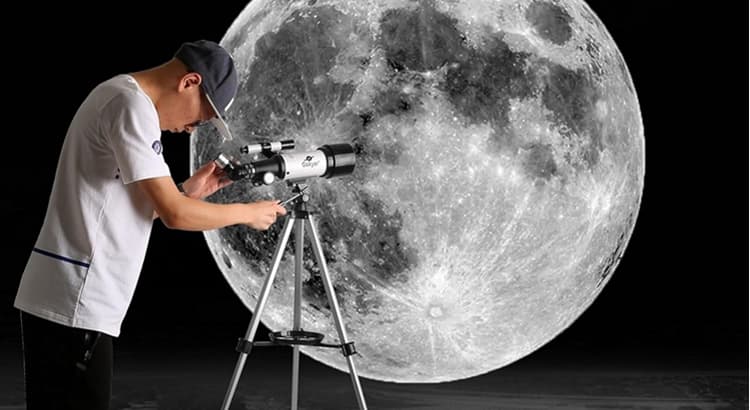Howdy, fellow stargazers and cosmic adventurers! So, you’ve got your hands on a shiny new Gskyer telescope, and now the burning question echoes through the starlit night: How do you use a Gskyer telescope?
Fear not, celestial enthusiasts, for we’re about to embark on a journey to demystify the art of navigating the cosmos with your Gskyer telescope, ensuring you get the most out of your astronomical experience.
Unboxing and Assembly
Let’s kick things off at the beginning – unboxing your Gskyer telescope. The packaging typically includes the telescope tube, mount, tripod, eyepieces, finderscope, and other accessories. Lay out all the components, and refer to the user manual for step-by-step assembly instructions.
Gskyer telescopes are known for their user-friendly design, and the assembly process is generally straightforward. So, no need to break a sweat – you’ll be ready to stargaze in no time.
Setting Up the Tripod
The tripod is your telescope’s sturdy foundation, so it’s crucial to set it up securely. Extend the legs to your preferred height, ensuring a stable base.
Gskyer telescopes often come with adjustable tripods, allowing you to customize the height based on your comfort and observation needs. Once set up, lock the tripod in place to prevent any wobbling during your cosmic explorations.
Attaching the Telescope Tube
With the tripod ready, it’s time to attach the telescope tube. Gskyer telescopes typically feature a dovetail mounting system, making the attachment process hassle-free.
Secure the telescope tube to the mount, ensuring a snug fit. Some models may include a slow-motion control mechanism, allowing you to smoothly adjust the telescope’s position for precise observations.
Aligning the Finderscope
The finderscope is your telescope’s navigation aid, helping you locate celestial objects before zooming in with the eyepiece. Gskyer telescopes often come with red dot finderscopes, which provide a clear target for aligning your telescope.
Align the finderscope with the telescope’s line of sight by adjusting the screws until the red dot aligns with the center of your field of view.
Choosing the Right Eyepiece
Gskyer telescopes usually come with multiple eyepieces of varying focal lengths, offering different magnification options.
The rule of thumb is to start with a lower magnification eyepiece to locate your target, then gradually switch to higher magnifications for detailed observations.
Experimenting with different eyepieces allows you to tailor your viewing experience to the specific celestial object you’re observing.
Pointing and Focusing
Now comes the exciting part – pointing your Gskyer telescope at the cosmic wonders above. Use the slow-motion controls to pan and tilt the telescope until your desired object appears in the finderscope.
Once you’ve located your target, fine-tune the focus using the telescope’s focusing knob. Gskyer telescopes are equipped with smooth focusing mechanisms, allowing you to achieve sharp and clear views of celestial objects.
Observing and Tracking
As you peer through the eyepiece, take a moment to soak in the celestial beauty. Gskyer telescopes often include alt-azimuth mounts, providing intuitive controls for tracking celestial objects as they move across the night sky.
Use the slow-motion controls to follow the motion of planets, stars, and other celestial bodies, maintaining a steady view throughout your observation session.
Maintenance and Care
Proper care ensures the longevity of your Gskyer telescope. After each use, cover the telescope to protect it from dust and debris. Store it in a cool, dry place to prevent any potential damage.
Regularly check and clean the optics, and keep an eye on the telescope’s overall condition to address any maintenance needs promptly.
In conclusion, using a Gskyer telescope is a rewarding and user-friendly experience, making it an excellent choice for both beginners and intermediate astronomers.
Whether you’re exploring the Moon, planets, or deep-sky objects, your Gskyer telescope is your cosmic guide.
So, grab your telescope, head outside, and let the celestial adventure begin. Happy stargazing!





